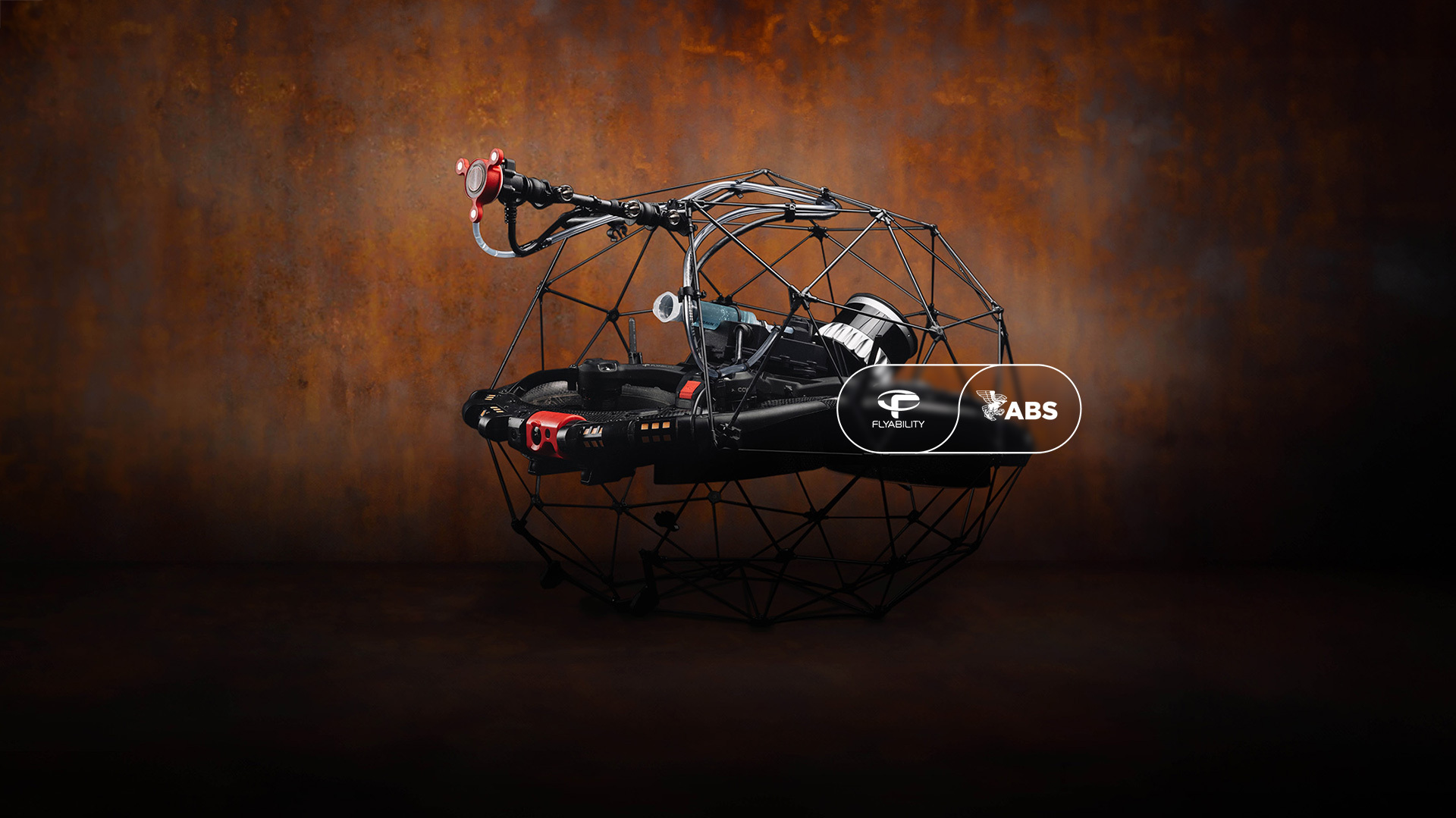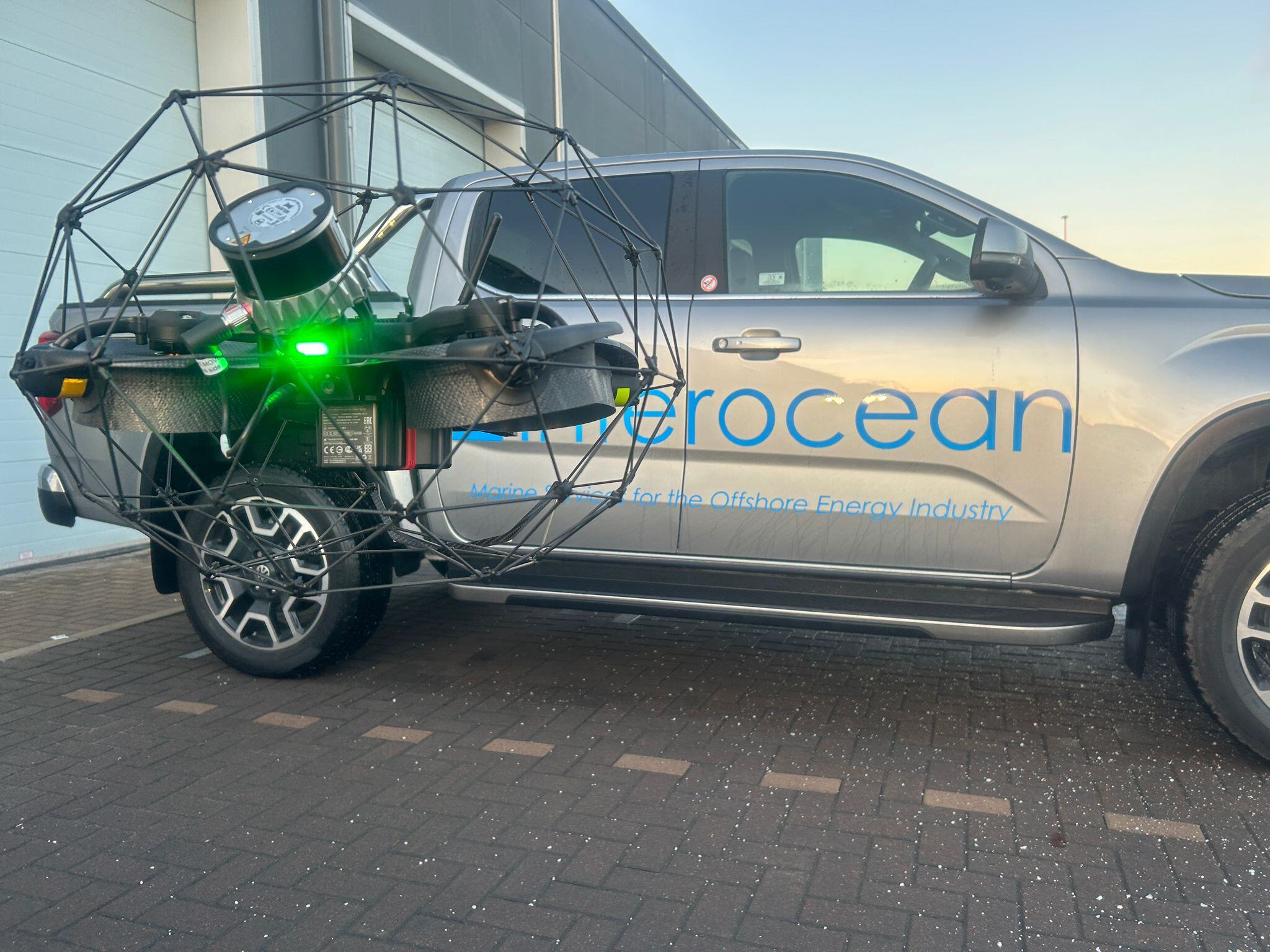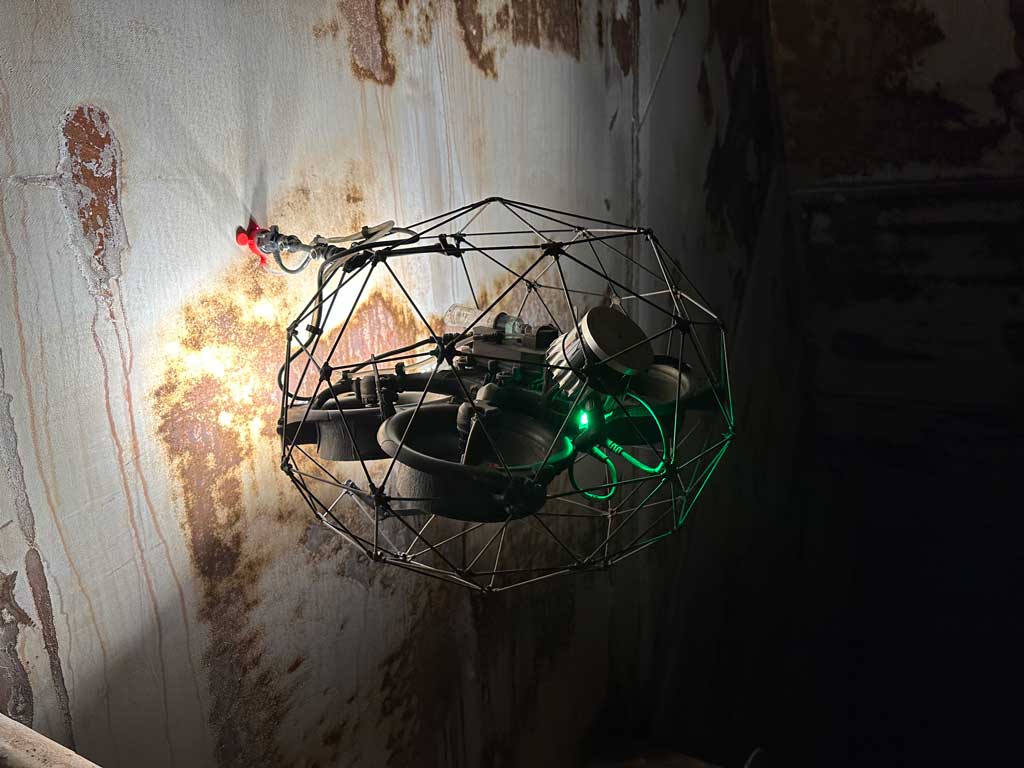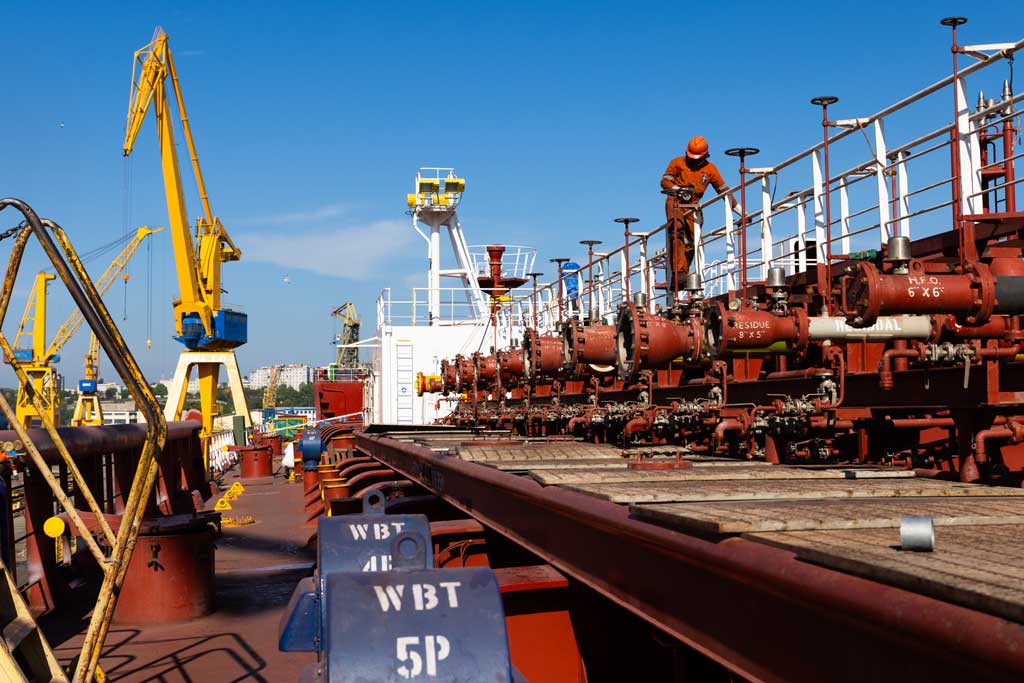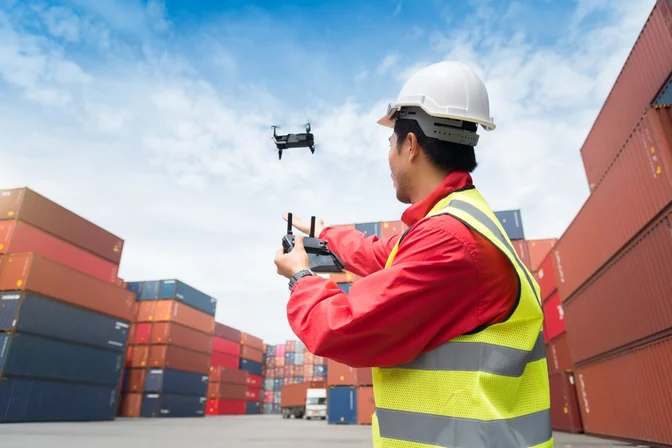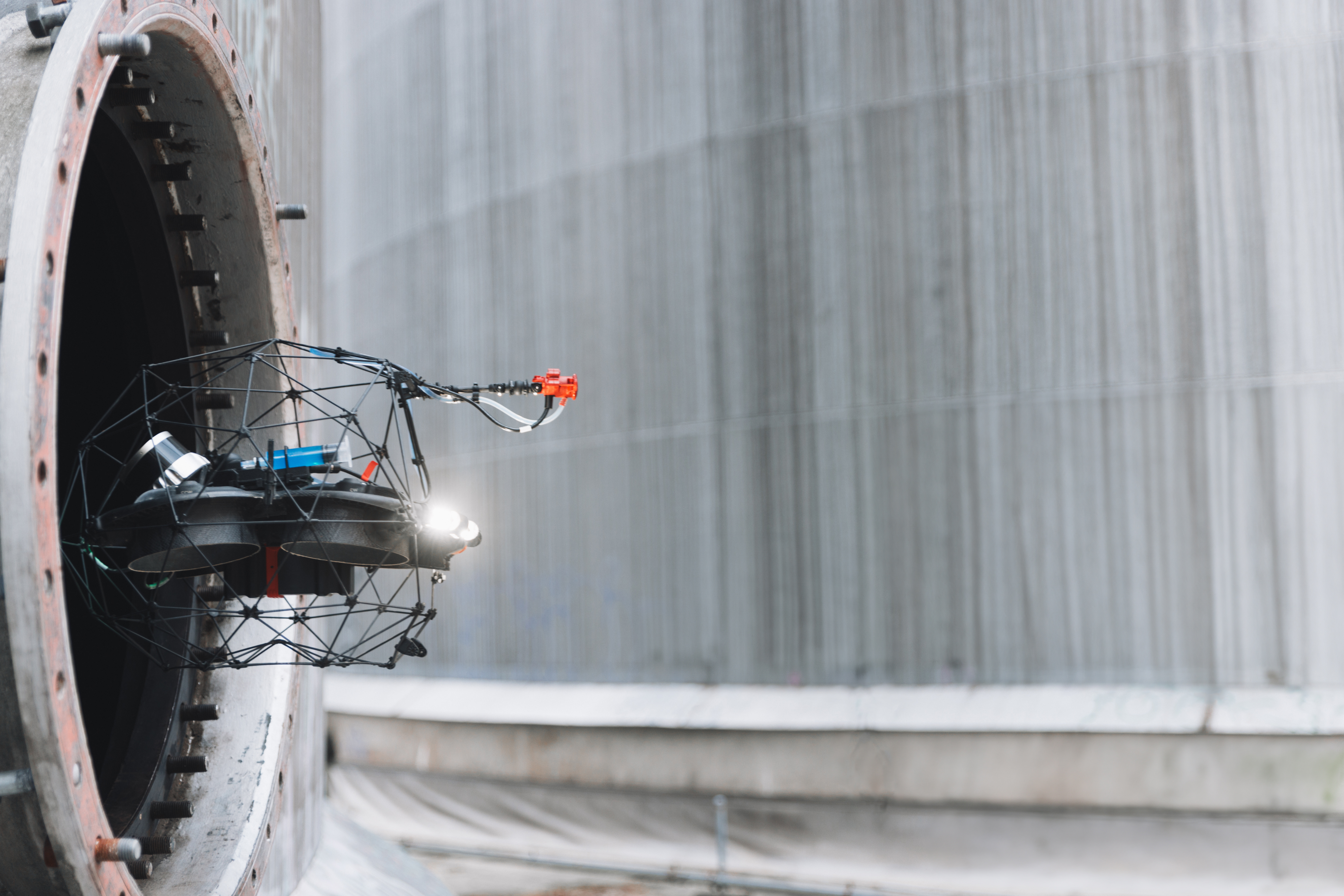- Blog >
- Modern Industry and the UT Drone
Modern Industry and the UT Drone
Every industry across the planet has its own unique rules and regulations to ensure the safety of people, the environment, and the equipment in use. The bodies that set these rules range from governments and national agencies to international class societies and multinational bodies.
An inspection needs reliable data to be successful - but it is not always easy to reach this data. Sometimes, in the case of assets such as ships or storage tanks, it can be challenging to safely gather information for an inspection. Alternative means of access are growing in use and popularity, and drones are part of this. They can reach new areas at height, in confined spaces, or even underground to gather critical data that is vital for inspections but not accessible. This is where UT drones come in.
 Caption: All industries set strict safety protocols. Some sectors, such as shipping, rely on ultrasonic testing equipment to certify the condition of assets.
Caption: All industries set strict safety protocols. Some sectors, such as shipping, rely on ultrasonic testing equipment to certify the condition of assets.
What is a UT Drone
A UT drone is an unmanned aerial vehicle (UAV) that is capable of taking ultrasonic thickness measurements. This technology is used to gather ultrasonic thickness (UT) data from locations that cannot be easily reached by inspectors such as chimney stacks, ballast tanks, or flue ducts.
A UT drone can be used as part of drone-enabled non-destructive testing, where the use of UAVs can streamline inspection processing. Drones can provide greater access to assets more safely, streamlining inspection processes and overall making asset management more efficient.
 Caption: The Elios 3, pictured here, is an example of a UT drone
Caption: The Elios 3, pictured here, is an example of a UT drone
How does a UT Drone work
These types of measurements are taken when ultrasonic testing equipment (a UT probe or gauge) is placed against the test surface and ultrasonic waves are passed through the material. How the sound waves bounce back is measured by the probe and used to determine how thick the material under test is.
For many traditional drones, this makes it very difficult to take UT measurements as not many drones are designed to withstand contact with a surface or hover in place for a prolonged period of time. This is why UT drones are highly specialized and designed to operate in different environments from a standard drone.
 Caption: A UT drone carries a special payload with an ultrasonic thickness measurement probe
Caption: A UT drone carries a special payload with an ultrasonic thickness measurement probe
UT drones will fly up to a measurement point and place their probe/gauge against the surface to measure thickness. The pilot flying the UT drone can then dispense couplant solution to ensure optimal transmission of sound from the probe to the material, and then take the UT measurement. Certain UT drones offer the option to adjust the gain and gates during the measurement according to the needs of the material under test. After the measurement is complete, the UT equipment drone can detach from the test point and fly to another location.
How many measurements can a UT drone take?
The number of measurements a UT drone can complete is dependent on the flight time of the drone, the quantity of couplant it can carry, and the skill of the pilot. In the case of the Elios 3 UT drone, it is possible to make up to 40 UT measurements per flight.
Benefits of a UT Drone
As part of drone-enabled non-destructive testing, a UT drone has multiple benefits for improving the safety, efficiency, and reach of a standard UT inspection. All of these factors then reduce the overall costs associated with a drone UT inspection.
SAFETY
By using a UT drone, it is possible to remove human exposure to risks associated with inspections. Some ultrasonic testing measurement points are either at height or in confined spaces, where it can require special permits and safety protocols to reach. It can be challenging to find UT-certified staff who are also licensed for rope access, increasing demand for highly skilled inspection staff to ensure the inspections are done safely.
 Caption: A UT drone can inspect confined spaces like this tank instead of sending people
Caption: A UT drone can inspect confined spaces like this tank instead of sending people
Alternatively, UT drones can fly inside confined spaces as small as 50x50 cm (20x20 inches) and gather dozens of measurements per flight. This eliminates exposure to risks in confined spaces such as toxic gases, asphyxiation, and even drowning. Similarly, a UT equipment drone can provide access to high points such as inside chimney stacks or the upper reaches of a ship hull, where access usually requires scaffolding or rope access. In some cases, such as flue duct inspections, regulations require there to be exits at both ends in the case of human entry, which can involve having to remove and open some elements of the duct like fan casings to adhere to regulations. A UT drone, in comparison, can fly in and out without the need for human entry, thus reducing the downtime associated with the inspection.
EFFICIENCY
A UT drone inspection can take less than an hour to complete. This is because the drones can be deployed within minutes of arrival on site. The pilot can guide the drone beyond the line of sight by relying on its high-definition camera - and some UT drones even have live LiDAR scans that provide a 3D map of its surroundings.
Similarly, a drone can fly quickly between UT measurement points even if they’re some distance apart. This is much faster than when an inspector has to move around scaffolding or when rope access technicians must adjust between locations. Similarly, drones are much faster than mobile elevated work platforms (MEWPs), able to fly inside and outside of assets without limitations on the height or breadth of areas they fly.
The speed with which UT inspections can be completed with drones is also enhanced by the recording process. In the past, UT measurements would be recorded by a rope access technician shouting values down to a person on the ground. This does not clearly show the exact location of a measurement point and leaves a high margin for error. Some inspectors wrote values onto the asset in chalk, but this is not weatherproof and can be unclear for future inspectors.
By contrast, a UT drone can tag the location of individual measurement points, making it easy to identify locations where there is a higher corrosion or degradation rates and send maintenance teams to that exact location. When these UT measurement points are tagged inside a 3D scan, as in the case of the Elios 3 UT drone, then a digital record of the asset is automatically created, making it easy to update records over time and track changes.
 Caption: Here are ultrasonic thickness measurements that have been geotagged by a UT drone during flight
Caption: Here are ultrasonic thickness measurements that have been geotagged by a UT drone during flight
With a UT drone, the overall process of asset management is streamlined, prolonging asset lifetimes through heightened management processes.
ACCESS
A UT drone can reach locations that traditional methods can’t. Be these in confined spaces, inside stacks, or even inside machinery, these UAVs empower drone-enabled non-destructive testing in a way never seen before. Certain UT drones can even fly inside areas with no GPS, unlocking access to underground or confined space locations with ease.
The enhanced access and ease of ultrasonic testing with a UT drone has an additional benefit: it makes it possible to complete inspections more often. When a UT drone can take measurements in minutes at height where scaffolding would take over a day to mount/dismantle, it makes it easier to complete inspections more frequently. When more UT inspections are done, it is possible to identify problems early and have a more up-to-date overview of an asset’s condition. UT drones encourage optimal asset management practices by making it easier to get critical data without prolonged downtime or higher costs.
 Caption: A UT drone can fly into complex environments and gather critical data that was not available before
Caption: A UT drone can fly into complex environments and gather critical data that was not available before
UT Drone Case Studies
⦁ How a UT drone saved 15,000 work in a ship hull
The Elios 3 UT was used for a periodical survey of cargo oil tanks in a medium-sized ship. Each cargo tank required a close visual survey and UT measurements. Typically it would require scaffolding and a team of 16+ people to gain access to all measurement and survey areas. With the #Elios3, it was possible to gather all measurements with the UT drone.

An example point cloud with the Elios 3 UT payload with spot measurements located in the point cloud
Discover this UT drone for ship surveys
⦁ A UT stack inspection with a drone
A stack at a power generation site was due for an inspection. Insulation on the outside made it challenging to inspect, and the location of the site in Northern Canada made the weather an additional challenge. The Elios 3 UT drone provided an ideal alternative means of access, where the drone flew inside th stack where there was no insulation to gather measurements, eliminating the need to remove insulation or use scaffolding.
 Thanks to the Elios 3's camera, it is possible to complete UT inspections beyond the visual line of sight. The Cockpit app can also be used to manually adjust the gain and gates, as shown on the left side of the screen here.
Thanks to the Elios 3's camera, it is possible to complete UT inspections beyond the visual line of sight. The Cockpit app can also be used to manually adjust the gain and gates, as shown on the left side of the screen here.
Read the full UT stack inspection case study.
⦁ Flue Duct and Silo UT measurements
At a cement plant in Germany, an inspection team wanted to test if using a UT drone was viable. They discovered the Elios 3 UT could inspect standard assets such as flue ducts and silos without the need for scaffolding or disrupting work, and provided easy access to assets not usually inspected due to limits in reaching them.

The Elios 3 and UT payload reached inside the flue duct despite dust and the bends in the duct's shape
Discover the Elios 3 UT for cement plant inspections.


-1.png)
